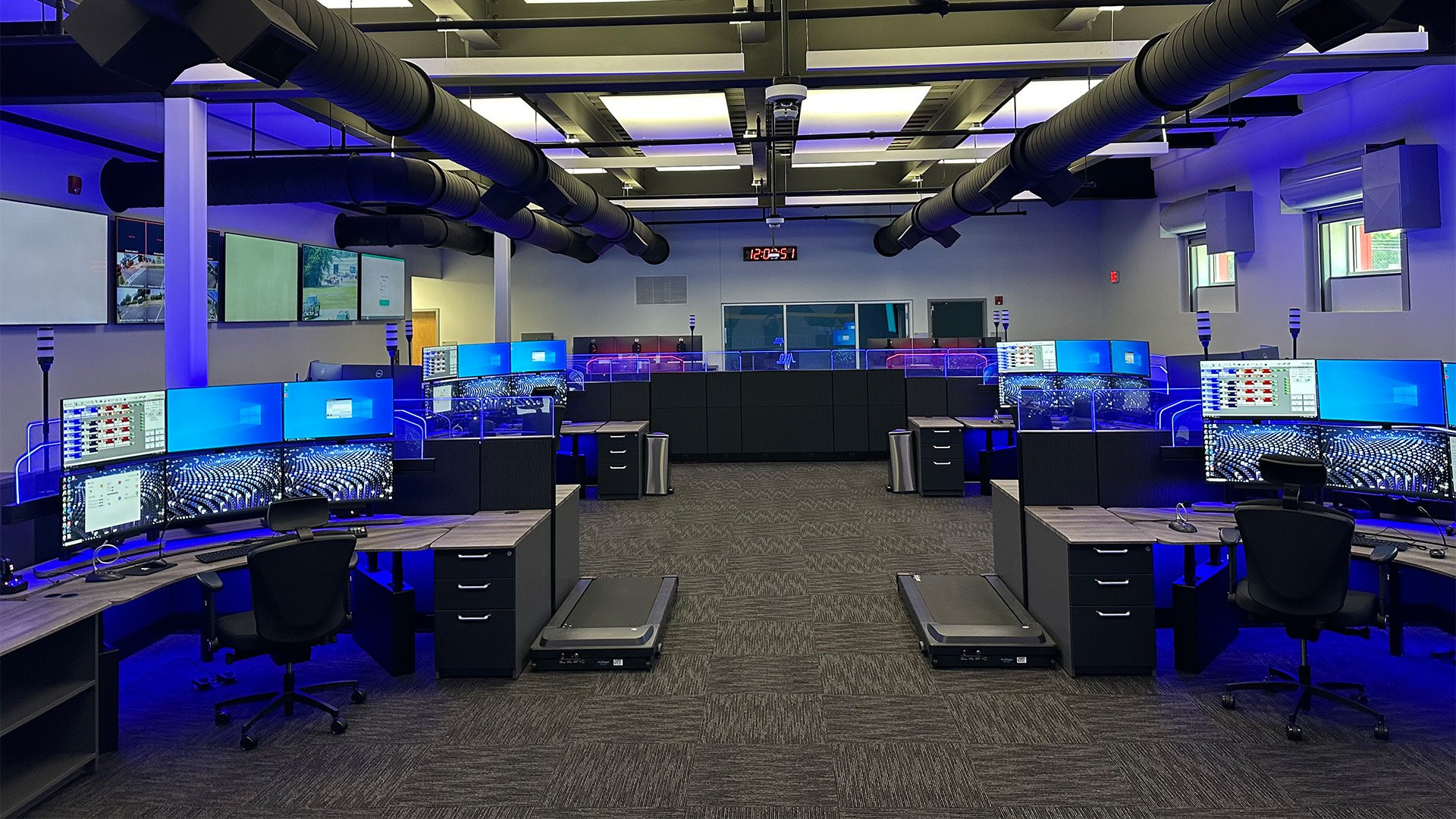
Whether you’re planning a new control room or revamping your current one, you understandably want the end result to work well for your people. In fact, you probably want them to love it. The goal is obvious, but how do you make sure you get there?
So what is the key ingredient in getting the desired results out of a new control room? Success relies on getting input from the people who will be using the control room as well as those who will be working on it.
Having everyone on the same page will help the process move smoothly and will help ensure everyone gets the end result they’re looking for.
Before you start building or remodeling, here is who you should speak with:
The Operators, Dispatchers, or Surveillance Officers
Surprisingly, some of your people won’t want a new control center or any new furniture. Change can be hard, and they may prefer things just the way they are.
On the other hand, there are others who won’t want to wait for the change to happen. They will be excited and will willingly offer their opinions on a no-ask basis.
Whether they’re reluctant about or eager for change, getting input from your people who work 8-12 hours at the consoles is critical. After all, no one will be affected by the change as directly as they will. Listening and learning is probably the best approach when getting a new control room. If your people are part of the conversation and decision, they will have some ownership over the end result. This will help them feel appreciated and empowered.
Supervisors
Input from your supervisors can immensely help simply because they’ve been there. Many supervisors were operators, dispatchers, or surveillance officers in the past, so they know the challenges and understand what is needed. They understand the workflow of the room and can predict what issues may arise. Their opinions and guidance will support the whole team, so be sure to note their advice.
IT Guys and Gals
Behind the scenes (or behind the console), is the IT member ensuring everything keeps working as it should. Your IT people also have knowledge on the trends and changes expected to unfold in the next five years or so, and their input will be invaluable.
Do you keep the CPUs at the console or at a server room? Is there additional software needed around the corner? These are important issues to figure out before you start building the new room.
Monitors are getting bigger, and CPUs are getting smaller. To best design the layout, ask your IT internal experts for their two cents on how to efficiently put everything together. They love this stuff and will be happy to tell you.
Outsource Experts
Whether it’s an architect for your new building or a designer updating your current control room, getting outside help will ensure that the full picture is taken into consideration. External experts can help with important issues, such as space-planning needs and compliance guidelines. Having their support can provide additional insights that you may not even have thought about. The more qualified eyes you have on a project, the more likely you are to be successful.
Manufacturer Rep and Designer of Consoles
Console representatives and designers are the experts who can help with your console needs. They should be able to provide clarification on modern best practices as well as insight into current industry trends. Utilizing their knowledgeable, well-rounded expertise will allow you to gather key information. They should also provide space-planning knowledge and actual designs/renderings to select from.
Who Do You Start With?
Now you know who you should speak with about your control room design, but where do you start?
There’s not a clear right or wrong answer. Some clients start with the architect, move on to the manufacturer, and then speak with their staff. Others do the exact opposite.
However you start, just make sure you cover all of the bases, get everyone’s input, and keep the communication lines open. This helps keep the pace and the pulse of the project moving along well. In my experience, starting with the operators seems to make the right decisions happen faster, and doing so also allows for greater consensus. At the end of the day, your people working at the consoles are the ones who have to live with the end result. Speaking to them early on will help ensure that they love it.
How Do You Gauge Success?
After the project is done, your people will need time to adjust and adapt. In time, they will love that they are not freezing anymore due to the new heaters at their desks. They’ll enjoy that their new height-adjustable, dual-surface desks are allowing them to view their monitors without killing their necks. They’ll like the fact that the greater amount of space in the room is giving everyone more room for their stuff.
Even with all of the perks, they’ll still need time to adapt and adjust. One facility manager, Chris, shared that after completion of the control room, he wouldn't make any changes for 90 days. This is a brilliant call. He knew that people need time to adapt to changes before any new ones are introduced.
You can use this same concept. After 90 days, gauge if your people are pleased. Does the room provide great benefits on many levels? Does the furniture house the equipment well? Does the room look good? Does everyone seem to love it?
If you take the time to communicate with a strong, supportive team, your new control room should easily be a giant success.



